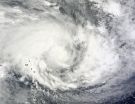(Press-News.org) ANN ARBOR--Each year, millions of people lose billions of dollars in NCAA March Madness basketball pools. Still, most return the following year for another pummeling.
But flipping a coin yields better results than carefully selecting brackets, says Dae Hee Kwak, assistant professor of sport management at the University of Michigan School of Kinesiology.
"I completed my own (informal) bracket alongside our study by literally flipping a coin 63 times," Kwak said. "I wanted to see if this outperformed the hard thought-out selections made by the study participants in our mock tournament. I did three sets of that and my average scores were better than the average of study participants."
In his newly published study in the Journal of Gambling Studies, Kwak wanted to understand why so many losing March Madness players returned the following year for more punishment. A third of the population--more than 100 million hoop hopefuls--partake in betting brackets during the three-week men's college basketball tournament.
Winning odds are insanely low: one in 128 billion for 63 perfect game predictions--far below that of a winning lottery ticket. Last year, Warren Buffet offered $1 billion for a perfect winning bracket, but the highest scoring known bracket among ESPN.com subscribers was still 18 games off.
For all the hype, research and time taken to make the oh-so-careful selections there's scant evidence that knowledge of the game makes any difference at all in bracket performance.
"A grandmother who's never seen a game has a similar chance of doing as well as her grandson who spends eight hours a day watching and researching basketball," Kwak said.
So, why play if the chances of winning are so low? Why spend so much time researching and selecting teams when it's basically pointless in terms of increasing your chance of winning?
Because that's not how players see it, Kwak said. In fact, it's quite the opposite.
It's related to the illusion of control theory and overestimation. The same holds true for selecting lottery numbers and other sports-betting pools such as fantasy football leagues.
During 2012 March Madness, when Kwak did his informal coin flip, he conducted two studies of mock tournaments. They controlled for age, game knowledge, bracket experience and gender. The first study showed that players who selected their own brackets showed more confidence in winning than those who didn't.
The second showed that players with high confidence were willing to bet up to 2.6 times as much as players with low confidence, but that high confidence didn't translate into winning performance. In other words, they bet more and if they lost, they lost more.
But, those high-confidence, high-betting (and high-losing) people are the same people most likely to keep playing year after year because high confidence drives winning expectations, which drives the greatest enjoyment, Kwak said.
"This is why it makes so much sense for each company to brand their own bracket and allow people to do their own selections and market these very heavily," he said. "That's what makes March Madness so much fun.
"The person who knows absolutely nothing about the game and doesn't care enough to even make their own selections has the same chance of winning as the basketball fanatic who spends hours on research."
INFORMATION:
Study: The Overestimation Phenomenon in a Skill-Based Gaming Context: The Case of March Madness Pools
Dae Hee Kwak
School of Kinesiology
The sugar industry used several tactics to influence the setting of research priorities for the 1971 US National Caries Program (NCP), according to a study published by Cristin Kearns, Stanton Glantz and Laura Schmidt from the University of California San Francisco, US, in this week's PLOS Medicine.
The researchers analyzed an archive of 319 internal sugar industry documents from 1959 to 1971 (the "Roger Adams papers") and US National Institute of Dental Research (NIDR) documents to explore how the sugar industry sought to influence the setting of research priorities ...
A newly discovered cache of industry documents reveals that the sugar industry worked closely with the National Institutes of Health in the 1960s and '70s to develop a federal research program focused on approaches other than sugar reduction to prevent tooth decay in American children.
An analysis of those papers by researchers at UC San Francisco appears March 10, 2015 in the open-source scientific journal, PLOS Medicine.
The archive of 319 industry documents, which were uncovered in a public collection at the University of Illinois, revealed that a sugar industry ...
A new technique for creating artificial DNA that is faster, more accurate and more flexible than existing methods has been developed by scientists at Imperial College London.
The new system - called BASIC - is a major advance for the field of synthetic biology, which designs and builds organisms able to make useful products such as medicines, energy, food, materials and chemicals.
To engineer new organisms, scientists build artificial genes from individual molecules and then put these together to create larger genetic constructs which, when inserted into a cell, will ...
Most military battlefield casualties die before reaching a surgical hospital. Of those soldiers who might potentially survive, most die from uncontrolled bleeding.
In some cases, there's not much medics can do -- a tourniquet won't stop bleeding from a chest wound, and clotting treatments that require refrigerated or frozen blood products aren't always available in the field.
That's why University of Washington researchers have developed a new injectable polymer that strengthens blood clots, called PolySTAT. Administered in a simple shot, the polymer finds any unseen ...
How much does health care really cost?
UCLA researchers have for the first time described cost across an entire care process for a common condition called benign prostate hyperplasia (BPH) using time-driven activity-based costing. They found a 400 percent discrepancy between the least and most expensive ways to treat the condition.
The finding takes on even further importance as there isn't any proven difference in outcomes between the lower and higher cost treatments, said study first author Dr. Alan Kaplan, a resident physician in the UCLA Department of Urology.
"The ...
Researchers at the UCLA Henry Samueli School of Engineering and Applied Science and the Université Pierre et Marie Curie in Paris have identified a method for manufacturing longer-lasting and stronger forms of glass. The research could lead to more durable display screens, fiber optic cables, windows and other materials, including cement.
Glasses are liquids that are cooled in the manufacturing process to reach a stable "frozen liquid" state. However, as glass ages and is exposed to temperature variations, it continues to flow or "relax," causing it to change shape.
This ...
The sun emitted two mid-level solar flares on March 9, 2015: The first peaked at 7:54 pm EDT and the second at 11:24 pm EDT. NASA's Solar Dynamics Observatory captured images of the flares, which were classified as an M5.8-class and an M5.1-class, respectively.
These were the second and third flares from the same active region -- numbered Active Region 12297 -- after it rotated over the left side of the sun on March 7.
INFORMATION:
...
An in-car alarm that sounds when sensors on the vehicle detect an imminent crash could cut crash rates from 1 in 5 to 1 in 10 for drivers over the of 60 suffering tiredness on long journeys, according to a study published in the International Journal of Human Factors and Ergonomics.
Psychologist Carryl Baldwin of George Mason University in Fairfax, Virginia, USA, and colleagues there and at the Sentara Norfolk General Sleep Center, emphasize how fatigue poses a persistent threat to transportation safety. Alarms that sound when a vehicle senses an imminent collision or ...
NASA's Terra satellite provided an outside look at Tropical Cyclone Pam while the RapidScat instrument that flies aboard the International Space Station provided an inside look at the surface winds generated by the storm. The GPM core satellite provided another inside look at Pam and provided data on where the heavy rainfall was occurring within the storm.
On March 9 and 10, Tropical Cyclone Pam strengthened to hurricane-force as it neared Vanuatu in the Southern Pacific Ocean.
On March 10 (11 p.m. local time), the Vanuatu Meteorology and Geo-Hazards Department (VMGD) ...
In an analysis of about 2,600 hospitalizations for severe sepsis, readmissions within 90 days were common, and approximately 40 percent occurred for diagnoses that could potentially be prevented or treated early to avoid hospitalization, according to a study in the March 10 issue of JAMA.
Patients are frequently rehospitalized within 90 days after having severe sepsis. Little is known, however, about the reasons for readmission and whether they can be reduced. Hallie C. Prescott, M.D., M.Sc., of the University of Michigan, Ann Arbor, and colleagues examined the most ...


